Folkestone
A look around a Kentish harbour town.
Photos and report by Mike Slocombe, July 2006
Folkestone lies in the Shepway district of Kent, England and dates back to the late 7th Century when it was known as 'Folcanstan' (probably from the 'stone of Folca', a common old English name).
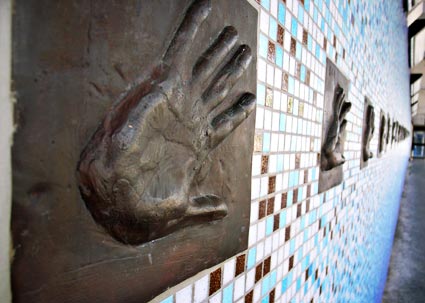
To commemorate the centenary of Folkestone Central station, there's a display of casts of hands from Folkestone residents, aged from one to one hundred
History
Pesky Vikings made a habit of rocking up into town and trashing the joint, with raids carrying on into the 11th century.
Even after Edward the Confessor had got comfy on the throne in 1042, the village got torched, this time by the stroppy Earl Godwin of Wessex, who was deeply unchuffed after being exiled by the king.
Keen to join in the fun, the French also decided to pop over in 1216 to wreck the place.
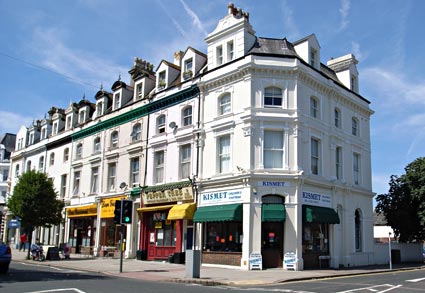
Good ol' solid and sturdy Edwardian architecture in Folkestone

Joining the Cinque club
By now the village was important enough to boast its own Mayor and a Corporation, and in 1313 it received a charter as a Corporate Limb of the Cinque Ports, with a port being built in 1629.
Being a Channel coastal town, Ye Olde Smugglers were a familiar sight along with the thriving herring and mackerel fisheries, and Edward Hasted (1732-1812) reported that he found Folkestone to be "an opulent and well-peopled town, having in it four hundred and fifty houses, and about two thousand inhabitants."

Folkestone was battered by 218 shells during the Second World War, with several flying bombs thrown in for good measure. The Nave and Chancel of Christ Church on the Sandgate Road were hit during a raid, leaving just the clock tower intact.
Shorncliffe Army Barracks
Mindful of trouble over t'sea, the Army bought over 229 acres of open land to the West of Folkestone on the heights overlooking Sandgate in 1794, extending the garrison further in 1796 and 1806.
The garrison was used to station troops before shunting them off to the Peninsula Wars, with the original wooden barracks being replaced with more durable stone buildings in 1804.
The Sir John Moore Barracks are currently the home of the Gurkha Regiment in the UK.
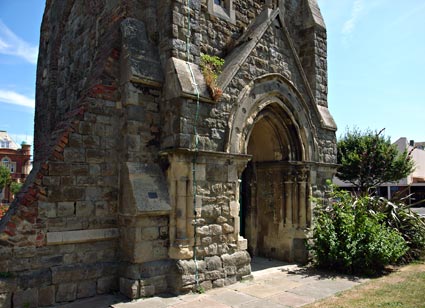
Close up of the clock tower of Christ Church.
Happy hols in Folkestone
With the arrival of the railway in early Victorian times, Folkestone grew both as an important cross Channel port and as a holiday resort.
To keep visitors happy, hotels, marine walks, pavilions, amusements, bandstands and even a water-powered lift were constructed around the town, which enjoyed thriving business from holiday-makers.
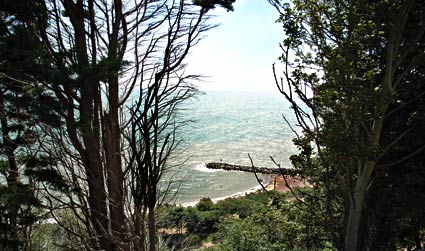
Looking out to the English Channel.
20th century: bombs, vanishing tourists and rebuilding
Because of its proximity to Europe, Folkestone was slammed hard during both wars, with so many shells flying in from across the Channel that the town earned the nickname of 'Hellfire Corner.'
After the last war, the rise of cheap package holidays abroad hit the tourist trade hard, with the closure of the ferry services to Boulogne further damning the town's prosperity.
However, recent investment has seen real improvements to the town, including a beautiful new walk called the Lower Leas Coastal Park which is well worth a stroll along.
As part of the area's regeneration, a charitable organisation called The Creative Foundation bought up a large number of run-down properties in the 'Creative Quarter' (the bit around the Old High Street and The Bayle)
These properties are then tarted up and rented out at affordable rates as work-spaces for artists and creative businesses.

FOLKESTONE PHOTOS
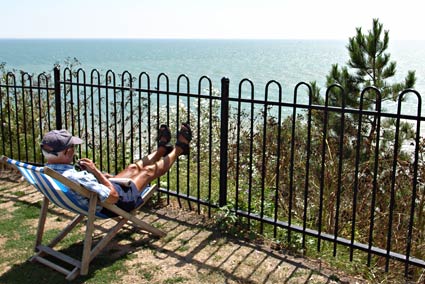
Old dude chilling put on the scorching sunshine (the UK was in a grip of a sweaty heatwave during our trip)
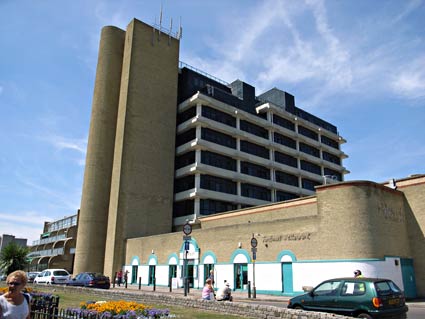
Hideous tower block facing the sea on The Leas. What were the developers thinking?
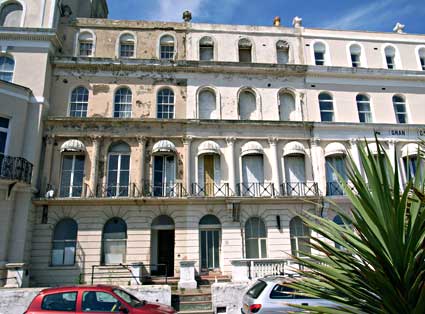
Faded Victorian houses on Marine Parade.
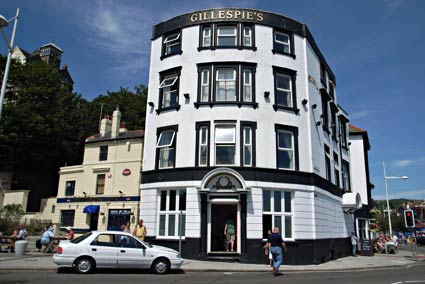
Gillespie's pub lies at the bottom of a very steep hill that descends from the town down to the harbour.

|
|

